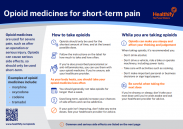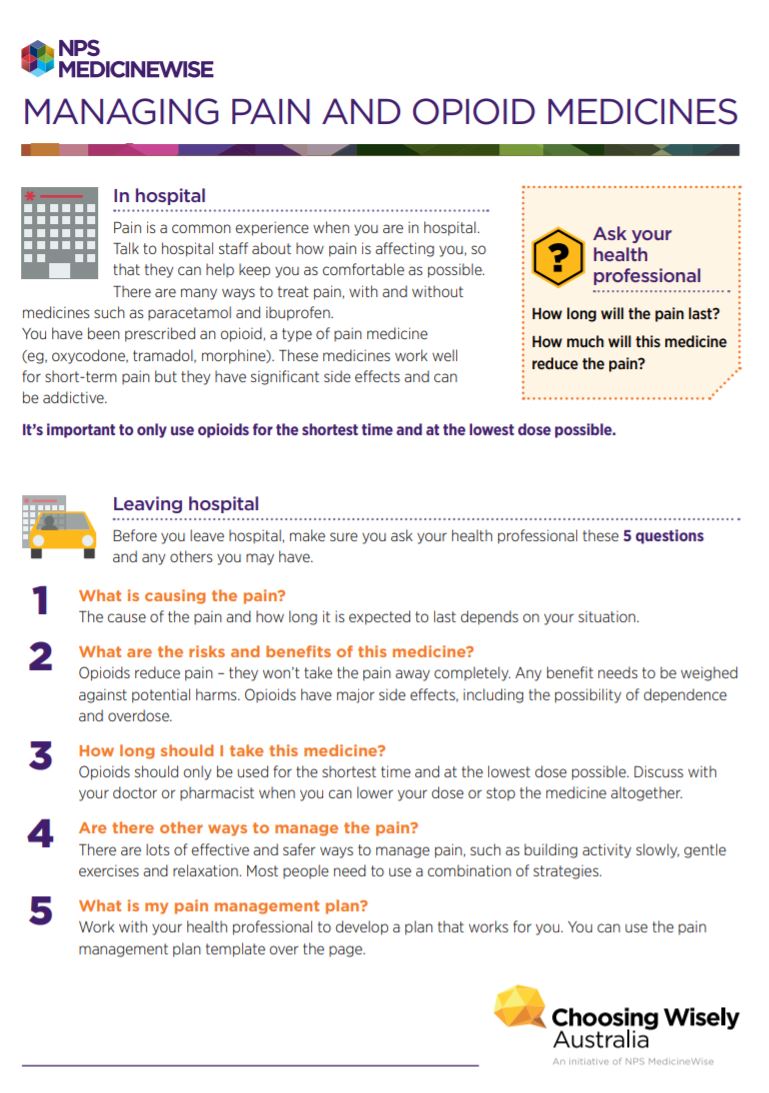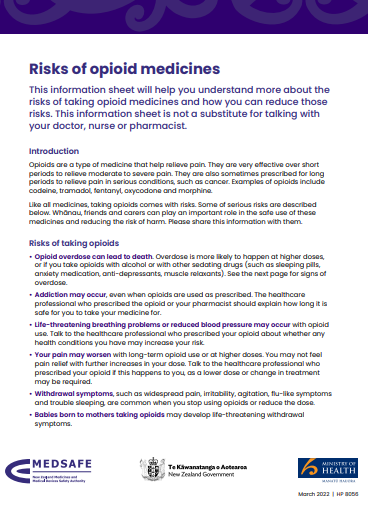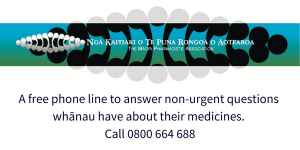Like all medicines, oxycodone can cause side effects, although not everyone gets them. Often side effects improve as your body gets used to the new medicine.
Addiction
Addiction is an excessive craving. If you are addicted to oxycodone, it means you are not able to control your use of it. It is unusual for people who are prescribed oxycodone for a short time or for a terminal illness to become addicted to it.
Some people are more likely to develop addiction than others and seem to be very sensitive to the cravings. You may be at risk for addiction if you have mental health problems such as depression or a history of substance abuse, including alcohol and recreational drugs.
To reduce your risk of addiction, oxycodone for short-term pain relief should be used for the shortest possible time, at the lowest effective dose, with a plan in place to reduce and withdraw treatment.
Other side effects
| Side effects |
What should I do? |
- Feeling sleepy, dizzy or tired
- Reduced concentration
|
- This is common when starting oxycodone or after increasing the dose
- Be careful when driving or using tools until you know how this medicine affects you
- Do not drink alcohol
|
- Feeling sick (nausea) or vomiting
|
- This common when you first start taking oxycodone
- Mostly this settles and goes away
- Tell your doctor if this is troublesome
- You may need an anti-sickness tablet at times
|
|
|
- Ask your doctor to prescribe a suitable laxative, which you need to take on a regular basis
- You also need to eat more fruit, vegetables, brown bread, bran-based breakfast cereals and drink plenty of water. Read more about how to ease and prevent constipation.
|
- Headache, dry mouth, altered vision
|
- These are quite common when you first start taking oxycodone and usually go away with time
- Tell your doctor if troublesome
|
- Frequent mood changes, anxiety, depression, thoughts of suicide, abnormal behaviours
|
- Tell your doctor immediately or ring HealthLine 0800 611 116
|
- Signs of an allergic reaction such as skin rashes, itches, swelling of the face, lips, mouth, or difficulty breathing
|
- Tell your doctor immediately or ring HealthLine 0800 611 116
|
| Did you know that you can report a side effect to a medicine to CARM (Centre for Adverse Reactions Monitoring)? Report a side effect to a product(external link) |









